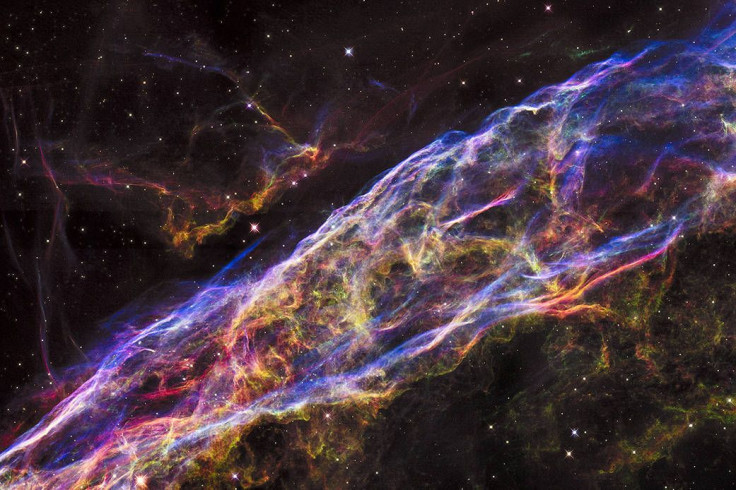NASA Shares Stunning Image Of Dead Star’s Ghostly Visage

NASA recently released a haunting image of a cosmic object that astronomers refer to as a ghostly remnant of a supernova.
Known as the Veil Nebula, this is a massive cosmic cloud that contains dust and heated gas. It is situated in the constellation Cygnus and forms part of a supernova remnant known as the Cygnus Loop.
According to NASA, the entire Veil Nebula spans 110 light-years across, making it about six times the diameter of a full moon. Astronomers from the agency noted that the nebula was caused by the death of a massive star that collapsed under the weight of its own gravity. This caused a powerful explosion in space, which astronomers believe reached Earth about 5,000 years ago.
“A ghostly visage on a cosmic scale, these remains of shocked, glowing gas haunt planet Earth's sky toward the constellation of Cygnus and form the Veil Nebula,” astronomer Anis Abdul wrote on NASA’s Astronomy Picture of the Day website.
“The nebula itself is a large supernova remnant, an expanding cloud born of the death explosion of a massive star,” he added. “Light from the original supernova explosion likely reached Earth over 5,000 years ago.”
The Veil Nebula is the latest ghostly image released by NASA as part of its Halloween celebrations. Earlier this week, the agency shared a photo of the Jack-o’-Lantern Nebula, which is a massive cloud of dust and gas that looks like a Halloween pumpkin.
According to the agency, the nebula’s eerie appearance was created by a star 20 times heavier than the Sun. The agency explained that the radiation from the massive star disrupted the dust and gas within the cloud, creating deep and dark pockets within the nebula.
In another photo, NASA shared a creepy image of Sun when it resembled a flaming jack-o'-lantern in space. The image was captured by the agency’s Solar Dynamics Observatory in 2014.
According to NASA, the Sun’s unique appearance in the photo was caused by the various active regions on its surface. Since some of the regions emit more energy than the others, they appear brighter. The varying energy levels of the different regions create an almost eerie face on the surface of the Sun.
© Copyright IBTimes 2024. All rights reserved.





















